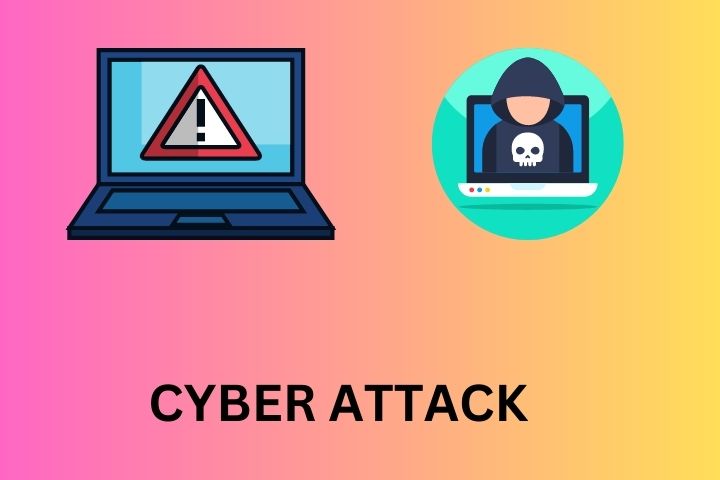
A cyber attack is a serious threat in today’s business world that is being carried out with increasing sophistication. Which measures IT security teams should take after a cyber attack?
IT security officers have yet to get used to these cyberattacks, but the first time can be particularly discouraging. Therefore, it is a good idea to be adequately prepared for a security breach and have an efficient incident response plan. These eight steps should be followed after a successful cyber attack.
Step 1 after a cyber attack: keep calm
No panic! This cannot be easy if your business has been hacked. After all, it’s not just about the direct effects of the attack but also about financial damage and loss of reputation. Therefore, you must remain calm and act prudently. Refrain from complicating the work of specialists investigating the matter. For example, you should ensure that you do not delete any data of central importance. This also includes haphazardly resetting passwords, deactivating accounts, or attempting to contact the attacker. In addition, you should always try to avoid fixing the problem yourself.
Step 2: Determine the extent
Responding to an attack is best done after initial incident analysis. To do this, companies should ask themselves the following questions: What is affected, and how did it happen? When and over what time did the attack happen? What actions might the intruder take? The answers to these questions will help the responsible security authorities to decide how best to proceed. In this way, the damage can later be limited and eliminated as best as possible.
Step 3: Make a plan
Time is of the essence in a successful attack, so quick action is required. The information obtained so far should be sufficient to plan the first countermeasures. This plan does not need to be comprehensive and includes assigned roles and schedules. However, it should include a clear, step-by-step process for the initial stages of the response. For example, incident response playbooks can be created long before an attack occurs.
In the first few months as a new security officer, you should develop preparedness plans and drills for responding to potential incidents – cyber crisis simulations, red, blue, and purple teaming, cyber crisis simulations. As you prepare, pay special attention to one of the biggest threats: ransomware.
Step 4: Contain the cyber attack
First, you should find out if your organization has an EDR (Endpoint Detection and Response) system to mitigate the risk remotely. Otherwise, it would be best if you manually disconnected the network from the plant. In the case of a physical connection, the question also arises as to whether the risk can be localized using the information available. Whether the attack only targeted a workstation or an entire server is also important. A workstation can easily be taken offline as the impact is limited to a single user. On the other hand, you have to plan more fundamentally and assess the consequences with a server. For example, in the case of factory infrastructure, downtime could result in significant financial losses.
If atypical activity is not recent but has been happening for several months, it is probably too late to contain it, and you should act cautiously. The hackers could become aware that they have been discovered and launch their countermeasures, for example, by deleting data or using ransomware. In this case, it makes more sense to observe the behavior of the cybercriminals. Find out how badly your network is compromised. You can then create a plan to limit the damage.
Step 5: Consult an expert
Security leaks can cause significant financial damage. But how the incident is handled can affect its magnitude. It is, therefore, always worthwhile to fall back on the know-how of proven security experts. So you can save money and minimize the damage. Managed Detection and Response specialists can access various technologies and environments. They are also more familiar with the variety of threats than novice companies. A good provider can respond to an incident in any environment and work effectively on special cases.
Step 6: Report the cyber attack
Company leaders must exercise caution in reporting. Mistakes can otherwise have reputational and financial consequences – from negative public perception to fines. Careful reporting is important. In doing so, you should also go into the technical actions carried out by the attackers and what possible effects these may have.
It also makes sense to coordinate with your PR and legal departments. You can develop an appropriate approach and suitable communication for the media, shareholders, and employees. Because depending on the impact of the incident, the various stakeholders will ask questions and examine how the company dealt with the incident. It would be best if you did not deny any facts. Sooner or later, they will come to light and can damage your reputation. If you work in a highly regulated area – such as finance, public utilities, or education – you must also comply with additional reporting procedures to the government or other regulatory bodies.
Step 7: Perform a restore
The recovery process depends on the extent of the damage. Minor incidents might involve only minor repairs:
- Removing harmful artifacts from the system.
- Patching a security hole.
- Updating all software.
- Deploying an EDR system.
In the case of larger incidents, it may be necessary to set up the infrastructure from scratch, which means a considerable expenditure of time and money. Irrespective of this. However, it always makes sense to set priorities when restoring. Some measures can be implemented more quickly than others, but at the same time offer good protection against further attacks. This includes setting goals to improve the overall security posture of your company.
Step 8: Do a post-mortem analysis
After the attack is before the attack. In the event of a security incident, an attacker exposes the company’s security gaps. And that gives you an ideal opportunity to eliminate these vulnerabilities and improve your infrastructure’s resilience to cyberattacks. The post-mortem analysis helps with this. What were the main causes of the incident? How could the incident have been prevented? And what changes should you make now to minimize risk in the future? You should also schedule risk assessments and penetration testing to detect possible threats in your infrastructure.
Comprehensive preparation for a cyber attack
Comprehensive preparation for a cyber attack is the be-all and end-all. Security breaches can differ in terms of the methods of attack and the technologies used. However, there are still a few guidelines that will always limit a cyber attack and minimize the damage. Above all, training, threat simulations, and a robust incident response plan ensure that you are one step ahead of cybercriminals and can react correctly to an attack even with changing threats.









